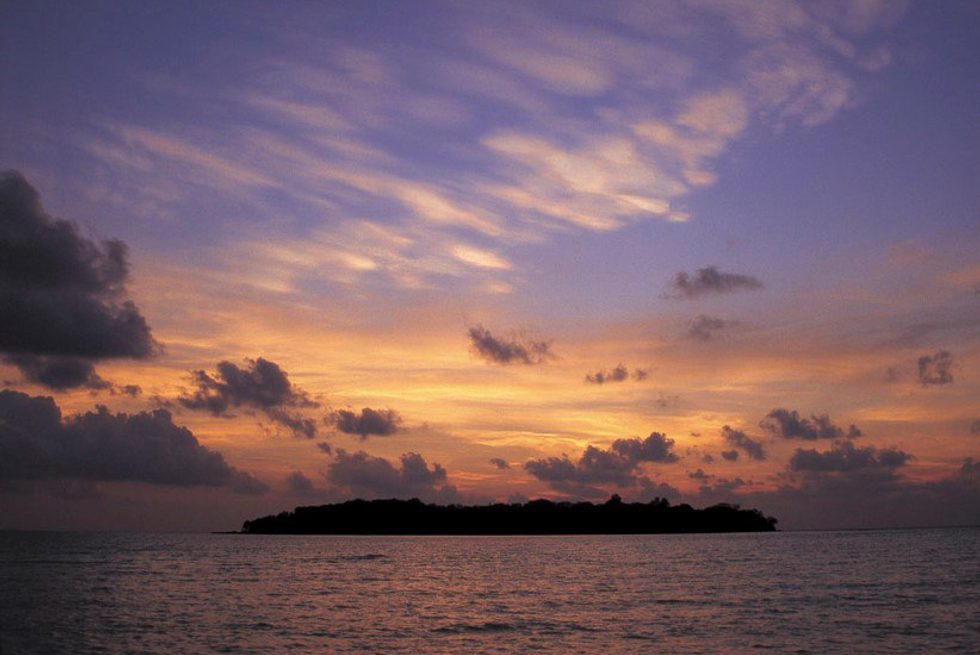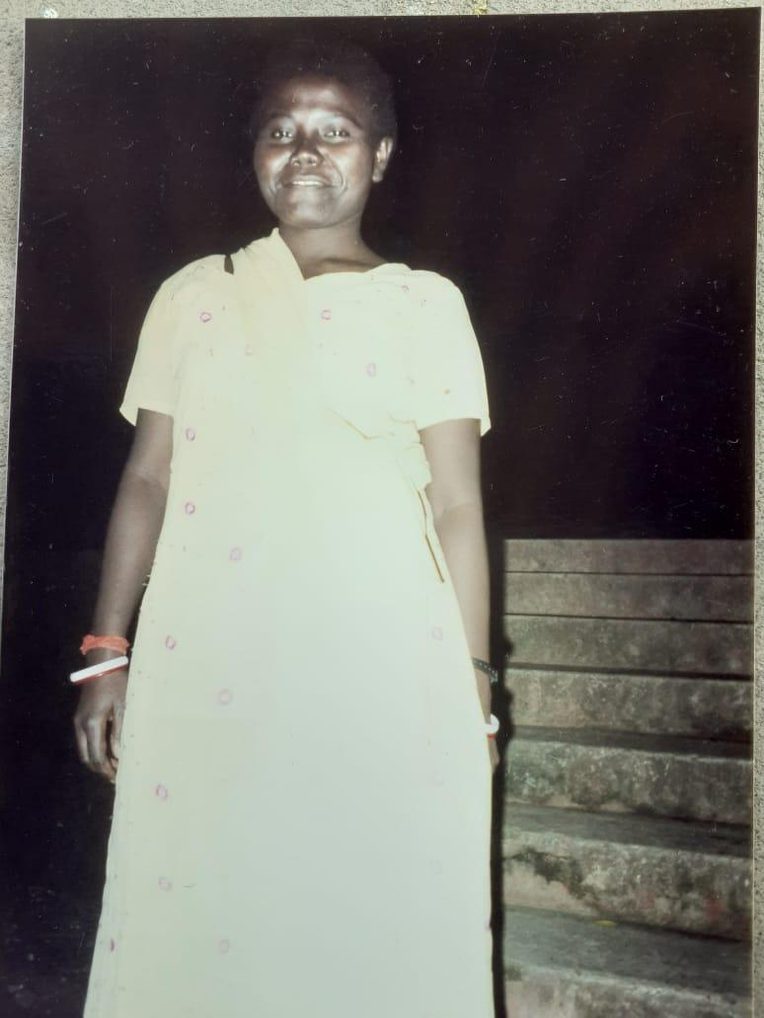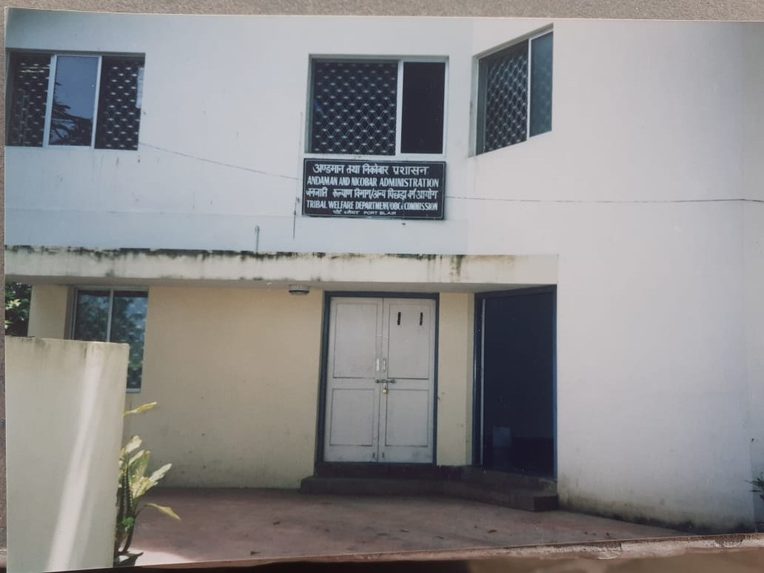Rengi and the Researcher, 2005: On Dilemmas of "Civilization"
From the Series: Assimilation, Dispossession, Erasure, or Refusal
From the Series: Assimilation, Dispossession, Erasure, or Refusal

The debate over isolation or assimilation of tribes has continued ever since a dominant culture touched the shores of the Andaman Islands and its indigenous cultures. The discussion never included the voices or perspectives of those indigenous about inclusion or exclusion from the mainstream. The aborigine of the Andaman Islands are the best examples of those most affected by changing policies of the Government of India acting in tandem with the Andaman administration. In particular, the Great Andamanese whose interaction with the "civilized" started the earliest, suffered the most because of shifting policies of government. Those shifting policies never took into consideration the wishes, relations, feelings, and emotions of all those affected by these decisions. The following paragraphs attempt to capture the dilemmas of Rengi, a Great Andamanese young woman, as she voices her struggles in choosing between her feelings or having to live according to the policies she and her people are subject to and governed by as the most assimilated of the Andaman tribal groups.
This is an account, narrated in first person, based on information gathered over a series of conversations in chance meetings at Port Blair with an aboriginal Andamanese young woman named Rengi and her family members. In the second part of the paper I use the first-person voice to provide a more impactful and authentic account.
Rengi: I am Rengi. I was born at Strait Island, the name of my father is Jirake, and mother is called Surmai. Including me they had ten children—Ilfe, Meyo, Boro, Tango, Riya, Yerambo, Kormo, Buluba, and Des. My father died few months back. He had great knowledge about the forests. With his loss, my race lost precious knowledge about the forest and sea, it lost its language and culture. The government, in order to provide access to health facilities and market, set-up an Andamanese Home—Aadibasera, at Port Blair. It was also a restricted place, but we could visit the outside of Home at Port Blair whenever they took us to the hospital or for buying things for us, and there were no restrictions to interact with outsiders. We also used to go to Delhi for the 26th January parade. My family regularly used to come to Adibasera and we liked the market of Port Blair. When the government decided to change the Isolation policy and adopted the assimilation policy, they taught us Hindi and English and a few among us also got jobs in Port Blair. I started working in the Anthropological Survey of India’s museum and one of my sisters Boro got a job in the traffic police at Port Blair. Now we are only forty-eight people left and fourteen are working in government jobs. Suddenly out of the blue the policy makers adopted the isolation policy and a ban was imposed on us. The interaction with outsiders has been totally stopped. But what about our emotions, our feelings, they cannot be restricted within the boundaries of policies?
Few months back I met Sukumar Roy, a Bengali boy, we like each other and our interaction started. Very soon we realized that we are in love. Now (in November 2005) we have decided that we should get married, but I was shocked to learn that it was not just our families whose consent is required but being a Great Andamanese girl, the Tribal Welfare Department would decide who I should marry. The Tribal Welfare Department at Port Blair—a governmental setup, got instructed by its head office that Government of India was following an Isolation policy in the context of Aboriginal Tribes of Andaman because of a decline in the Aboriginal Population. Therefore, with a view to further the objectives and policy of the state, the Tribal Welfare Department refused to give permission for this marriage in order to stop the mixing of their population.


The tragedy of life is that the person inside dies while one lives. Why should only I bear the burden of saving my race?
Researcher: In the year 1858, when the British settlers arrived in Andaman, there were more than 6,000 Great Andamanese living in the islands (Portman 1990). Hundreds of people of their race were killed in conflicts as they defended their territories from British invasion, and thousands more were wiped out in devastating epidemics of measles, influenza, and syphilis—all introduced by the outsiders. In the early 1860s, the first "Andamanese Home" was set up on Ross Island, and Great Andamanese were kept there in order to "tame" them. When they tried to escape from the Home they were sent to prisons. Sometimes they were shackled. The Aboriginals were then introduced to experimentation and sexual exploitation,1 among others—resulting in a gradual decline of their population. In 1866, Mr. Homfrey noticed that fifteen births had occurred during the three months in Andamanese Homes, however, not a single child survived (Portman 1990). He did not realize that a race which had always sustained and flourished in forests, if incarcerated in a building made of stones and bricks, would not survive. Forests were plundered by British Government in the name of commerce and development, and even after independence the same continues. India became independent in 1947 and in 1956, to protect the areas and rights of Six Aboriginal tribes the Andaman and Nicobar Protection of Aboriginal Tribes Regulation (ANPATR) was introduced by the government. It proved to be a very weak instrument to save the tribes because of its frequent violation. To protect the Aboriginals, Great Andamanese were shifted to Strait Island, where only a handful of them live. A hunter-gatherer tribe was forced to learn cultivation, however most of the time these attempts remained unsuccessful and the Aboriginals were made to remain dependent on the government dole.
Rengi’s feeling did not stop at the boundaries of the isolation policy and she got married to Sukumar Roy. Many years passed and the Isolation policy continued, at the same time the violation of ANPATR 1956 was made an offense. The policy did not affect Rengi’s decision but the lives of many other Andamanese men and women were suppressed.
In the first week of August 2018, in order to foster tourism in the archipelago of Andaman and Nicobar (A&N), the Government of India yet again changed its policy. This privileged tourism over protection of tribes and removed the Restricted Area Permit (RAP) from twenty-nine islands in Andaman, including Strait Island (Giles 2018). Thus, to explore twenty-nine islands in the Union Territory, the Restricted Area Permit is no longer required until December 31, 2022. This step may boost the economy of these islands. But it may also harm the life of already vulnerable tribes and put them at greater risk.2
Now these Aboriginal people want an answer from the nation: “In the name of protection of race why do you follow the isolation policy for so many years and suddenly you open our home for tourism?” They also say: “When we were happily living our life in our forests, you infiltrated them, you introduced your culture, you destroyed our forests and cleared patches for cultivation, you initiated relations, but when we want to enter into new relationships you flip back and impose restrictions. We were kept in isolated places, not allowed to interact with others, we were used as specimens and we were experimented with again and again. Why are we never consulted and continually kicked like a football between the boundaries of isolation and assimilation policies, we ask why?”
1. When the British failed to pacify the tribe through violence, they tried to "civilize" them and introduced a range of new things such as cultivation, clothing, shelters, food items, language, tobacco, and intermixing with other races. The introduction of all these new things as an experiment to civilize a hunter-gatherer tribe largely failed and wiped out whole tribes.
2. Recently, in March 2020, the spread of Covid-19 compelled the Union Territory administration to again change their policy, moving the tribes deep inside forest areas to be in isolation. Incidentally, this addresses some anthropologists' concerns that vulnerable tribes may become extinct due to the pandemic.
Giles, Denis. 2018. "The Beginning of the End of Andaman and Nicobar’s Particularly Vulnerable Tribal Groups." Down to Earth (blog).
Portman, Maurice Vidal. 1990. A History of Our Relations with the Andamanese. New Delhi: Asian Educational Services.